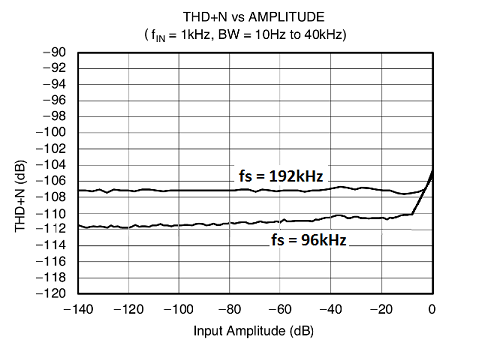

Stereo Lab supports the handling of all sample-rate files up to and includng 176 and 192kHz. Pspatial Audio are enthusiastic supporters of dual-rate (88.2/96kHz) 24bit audio resolution files and believe these guarantee a worthwhile performance increment over 16bit files sampled at 44.1kHz (or 48kHz). However, we would say the following about quad-rate files.....
Hugh Robjohns of Sound on Sound magazine makes a robust point concerning quad rates thus,
The 176kHz (or 192kHz) quad-sample-rate idea is really just about being able to say 'mine's bigger than yours'.......In the real world, 96kHz can be useful, ...... but the quad rates are a folly.
Certainly, quad rates are demanding in terms of memory, disc space and processing power. And there is cogent argument which runs that sampling audio at the frequency of the radio carrier wave for BBC Radio 4 on long-wave band may not really be necessary. After all, eighteen kilohertz is a stretch for most of us to hear: let alone eighty kilohertz!
Hugh Robjohns quotes Dan Lavry - one of the most respected designers of audio converters in the world, and a die-hard opponent of ultra-high sample rates like 192 kHz - who wrote in an influential and now-famous white paper,
Certainly, the higher the sample rate, the greater the proportion of error in sampling time and the lower the actual audio resolution. This is illustrated by the manufacturer's measured results for a professional studio quality "state of the art" A to D converter, and which is representative of most of today's converters. The graph below plots total THD + N in a bandwidth of 20Hz to 40kHz for a 1kHz signal at swept amplitude from -140dBFS to 0dBFS when sampled at 96kHz and at 192kHz.The notion that more is better may appeal to one's common sense. Presented with analogies such as more pixels for better video, or faster clock to speed computers, one may be misled to believe that faster sampling will yield better resolution and detail. The analogies are wrong....... In fact all the objections regarding audio sampling at 44.1kHz are long gone by increasing sampling to about 60kHz.

Given that a bandwidth of 40kHz still assures a very large margin above the human hearing range, we are convinced that perceivable resolution is preferable to imperceptible frequency extension. Moreover, we have heard the difference, such that audio tests recorded at very low-level at 192kHz sampling sound slighly noisier and "rougher" than parallel low-level recordings made at 96kHz. Perhaps this is due to the ultrasonics in a 192kHz file which are, quite frankly, a liability for the rest of the downstream audio chain. Certainly, there has never been an audio amplifier (let alone a loudspeaker) which is unconditionally happy about amplifying and transducing signals up to 100kHz.
However, as with all things in audio, it's unwise to be pedantic, so from software version 1.2, Stereo Lab supports quad-rate files.
 Home page
Home page
For all support issues, go here.
For Pspatial Audio sales, email: sales@pspatialaudio.com
